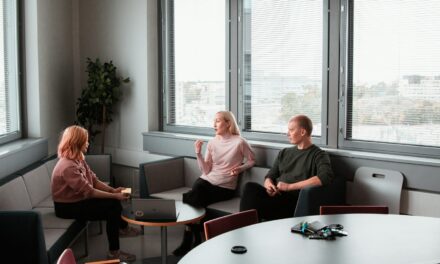As more businesses return to office-based, or hybrid working, firms must consider their accessibility strategies when it comes to the specific needs of their neurodiverse employees.
Approximately 1 in 7 people are neurodivergent, which equates to approximately 15% of people in the UK. They may be affected by conditions such as Attention Deficit Disorders, Autism, Dyslexia or Dyspraxia.
Consider accessibility within your 2024 strategic plans
As businesses begin focusing on their 2024 strategic plans, now marks the ideal time to critically assesses how accessible their workplace wellbeing strategies are for employees with neurodivergent needs.
While most healthy workplace strategies are centred around improving physical and mental health, those policies are typically focused on neurotypical employees, who can function and process information in the way that society expects.
For employees who are not neuro-typical, they can feel left out and excluded from standard workplace wellbeing strategies. As a consequence, they work in uncomfortable surroundings that prevent them from working to the best of their ability.
The result is that businesses often don’t realise how un-inclusive they are, even when they are taking proactive steps to improve their workplace environments. They may be focusing heavily on workplace mental health strategies or investing in new recruitment campaigns but fail to realise that the recruitment process or general office environment could be contributing towards serious issues.
To overcome this, neurodiversity should always be placed at the forefront of any recruitment, retention and wellbeing planning.
It all begins with creating a supportive environment
Although neurodiverse employees need to take responsibility for their own needs, and clearly communicate what they need to help them work effectively, this can be an overwhelming conversation to have. If an employee feels that they are not working in a supportive environment, it can be difficult to ask for reasonable adjustments to be made which would allow them to work in a way that suits them.
It’s also worth noting that right now, many people are being diagnosed with neurodiversity in adulthood. Those employees may not know what they need to help them work more effectively, as they’ve likely spent their entire careers trying to fit into a neurotypical office environment.
Businesses need to move away from the idea that inclusivity and accessibility is purely physical that we can see. They should be learning how to take steps so that every single employee is empowered to work to the best of their ability.
Five quick and easy ways to improve accessibility within the workplace
A practical tip to help businesses identify what reasonable adjustments can be easily implemented is to create a “menu style” list of potential support aids or tools that can improve accessibility within the office.
These support aids are cost-effective, and easy to implement, but could have a huge impact on helping neurodiverse employees to thrive.
Option #1 – Create quiet working areas and breakout spaces within the office.
The benefits of having a quiet working area are well known, but often those areas may be located next to high-traffic areas such as a kitchen or bathroom. Implementing quiet rooms, where no phones and no talking are allowed could help people improve concentration. Employers should also facilitate a quiet breakroom where individuals can relax and unwind during their lunch/break times.
Option #2 – Allow for exercise spaces.
Conversely the opposite is also true. Stretching your legs and getting movement into your body is great for physical health, but it’s also essential for those who need to burn off energy if they’ve been sitting at a desk for too long. Creating a lunchtime walking group or investing in treadmill desks can be highly effective ways to help neurodiverse people remain comfortable at work.
Option #3 – Reconsider the office lighting.
Most office lighting involves fluorescent overhead lights, but these can be overwhelming and distracting if you are neurodiverse. Changing the light bulbs to warmer light or using lamps can help minimise those distractions and reduce the risk of headaches or migraines. Employers could choose to set up specific office areas with dimmer lights to prevent a sensory overload.
Option #4 – Provide blue light blocking glasses.
Asking your IT department to implement dark filters on computer screens or tablets, or providing blue-light blocking glasses for all employees can help to reduce fatigue, eye strain and headaches. Those who regularly wear blue light blocking glasses typically report better sleep patterns, which can directly contribute to healthy workplace strategies.
Option #5 – Consider using coloured paper.
Although firms are reducing printed items for environmental reasons, thousands of pages are printed every day. Most companies will use stark white printer paper, but for those affected by dyslexia or dyscalculia, printed material can be difficult to read. Asking employees if they need a switch to different coloured paper, the provision of coloured overlays or larger font sizes and increased line spacing could make it much easier for individuals to read through corporate communications. Similarly, offering IT assistance to set up laptops or tablets with different coloured backgrounds and font colours can help immensely.”
Implementing reasonable adjustments to aid your neurodiverse staff.
People who are affected by neurodiversity have to work twice as hard to cope in a neuro-typical environment which can make it difficult to work to the best of their ability.
There are so many complex needs within each diversity it’s unreasonable to expect businesses to accommodate every adaptation. However, if a business is open to implementing positive solutions, it becomes easier to work out a win-win solution for both business and employee.
Ultimately, it all comes down to communication, and facilitating a culture where neurodiverse employees are freely able to talk about what adjustments they need to help them work effectively.











